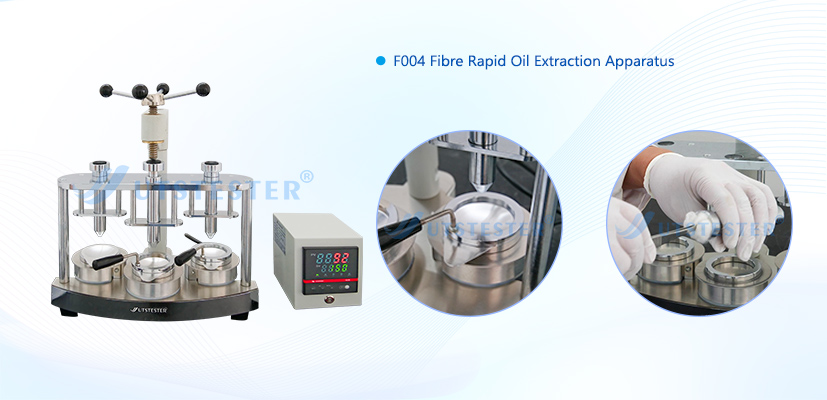Содержание масла является одним из ключевых показателей оценки свойств всех волокон и изделий из них, за исключением хлопка, и выражается в процентах содержания масла на единицу массы. В различных стандартах на продукцию в качестве наименований объектов испытаний используются такие термины, как «остаточная жирность», «содержание масла», «вещества, растворимые в дихлорметане» или «экстрагируемые этанолом».
1. В химических волокнах масла в основном присутствуют в виде добавок, вводимых в процессе прядения и текстильной обработки. Эти добавки предотвращают или устраняют накопление статического электричества, придавая волокнам мягкость и гладкость. Содержание масла является критическим показателем для химических волокон: слишком низкий уровень может вызывать статическое электричество из-за трения во время производства, а слишком высокий уровень ухудшает влагопоглощение и повышает склонность к накоплению пыли.
2. Жиры в перьях и пуху в основном образуются из остатков жира на тушке уток и гусей после стирки и дезинфекции. Избыточное содержание жира может вызывать появление запахов и рост бактерий, а недостаточное количество жира влияет на внешнюю структуру пуха, делая его ломким и снижая теплоизоляцию изделия.
3. Куколочное масло в шёлке получают из коконов тутового шелкопряда. Высокое содержание масла снижает эластичность, ухудшает впитывание влаги и воздухопроницаемость, а также вызывает неприятный запах.
4. Как и у млекопитающих, у овец есть потовые железы. Таким образом, физиологические примеси в шерстяных волокнах в первую очередь включают сальный воск, выделяемый сальными железами, пот, выделяемый потовыми железами, и отмершие чешуйки кожи. В процессе обработки необработанной шерсти, немытая шерсть, состриженная с овец, подвергается машинной мойке для удаления сального воска, пота и других примесей перед сушкой для получения мытой шерсти. Таким образом, содержание масла, измеряемое в этаноловом экстракте мытой шерсти, является ключевым показателем эффективности удаления жира и пота, служащим эталоном для оценки качества стирки.
5. В процессе расчесывания мытой шерсти в ленту добавляется шерстяное масло для придания свободным волокнам гладкости, мягкости и антистатических свойств. Это облегчает прохождение шерстяных волокон через гребнечесальное и прядильное оборудование, предотвращая такие проблемы, как распущенность, спутывание и ломкость. Дихлорметанрастворимые вещества отражают компоненты в кашемировом трикотаже, извлекаемые дихлорметаном. К ним, в первую очередь, относятся различные замасливатели, добавляемые в процессе производства, такие как прядильные масла, моющие средства и смягчители, а также небольшое количество остаточного натурального жиромасла. Неправильное количество добавленных в процессе производства шерстяных масел может привести к повышению этого показателя в изделии. В тяжелых случаях это может привести к появлению неприятного запаха и липкости.
6. Принцип теста
Используя свойство жиров и масел растворяться в органических растворителях, таких как эфир, дихлорметан и этанол, органические растворители применяются для экстракции жиров и масел из образца. Органический растворитель затем испаряется в печи. Остаточная масса жира и масла, а также масса образца взвешиваются, и рассчитывается содержание масла в образце.
7. Стандарты испытаний
Стандарты различаются в зависимости от типа продукта, например:
GB/T 14272—2011 «Изделия пуховые». Приложение C: Определение остаточного содержания жира
ФЗ/Т 20018—2010 «Определение дихлорметанрастворимых веществ в шерстяных текстильных изделиях»
GB/T 24252—2009 «Шёлковые одеяла». Приложение C: Метод определения содержания масла в наполнителях
GB/T 6504—2017 «Химические волокна — Метод определения содержания масла»
GB/T 6977—2008 Методы испытаний на содержание этанольных экстрактов, золы, растительных примесей и общего количества нерастворимых в щелочах веществ в очищенной шерсти — Метод испытаний на содержание этанольных экстрактов в очищенной шерсти
8. Являются ли различные методы тестирования взаимозаменяемыми?
Хотя методы определения содержания масла различаются для разных типов волокон, основные принципы остаются неизменными. В этих методах для экстракции жиров и масел из образца используются растворители, такие как диэтиловый эфир, дихлорметан или этанол. Затем растворитель испаряется, оставляя остаточный жир. Содержание масла в образце рассчитывается по формуле.
Маслоэкстрактор QuicExtra Rapid Fiber
совместим с экстракционными растворителями, такими как петролейный эфир, диэтиловый эфир и дихлорметан.
9. Испытательное оборудование
Экстрактор быстрого извлечения масла QuicExtra Fiber
Этот прибор, также известный как Fiber Oil Rapid Extractor, использует принципы проникновения и испарения растворителя (например, петролейного эфира, диэтилового эфира или других органических растворителей) для растворения масел в текстильных волокнах. Это позволяет определять содержание масел в образцах шерсти и синтетических волокон. Благодаря трёхстанционной конструкции он быстро и тщательно извлекает масла в течение 10 минут, автоматически рассчитывает содержание масел и загружает результаты в систему после подтверждения.
Содержание масла в различных текстильных волокнах варьируется в зависимости от типа волокна и условий обработки. Ниже приведены типичные диапазоны содержания масла в распространённых текстильных волокнах (только для справки), обычно выраженные в процентах:
Полиэстер: 0,3% - 1%
Нейлон: 0,5% - 2%
Полипропилен: 0,2% - 0,8%
Акрил: 1% - 3%
Шерсть: 1% - 3%
Хлопок: менее 0,5%
Вискоза: 0,3% - 0,8%
Модальный: 0,2% - 0,5%
Арамид: 0,1% - 0,5%
Углеродное волокно: менее 0,05%

Электронная почта:
hello@utstesters.com
Прямой звонок: + 86 152 6060 5085
Тел.: +86-596-7686689
Веб:
www.utstesters.com
 +86 152 6060 5085
+86 152 6060 5085





 English
English русский
русский español
español português
português










 hello@utstesters.com
hello@utstesters.com hello@utstesters.com
hello@utstesters.com +86 152 6060 5085
+86 152 6060 5085 +8615260605085
+8615260605085